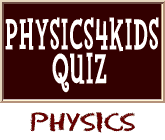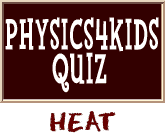Thermodynamic Laws that Explain Systems
A thermodynamic system is one that interacts and exchanges energy with the area around it. The exchange and transfer need to happen in at least two ways. At least one way must be the transfer of heat. If the thermodynamic system is "in equilibrium," it can't change its state or status without interacting with its environment. Simply put, if you're in equilibrium, you're a "happy system," just minding your own business. You can't really do anything. If you do, you have to interact with the world around you.A Zeroth Law?
The zeroth law of thermodynamics will be our starting point. We're not really sure why this law is the zeroth. We think scientists had "first" and "second" for a long time, but this new one was so important it should come before the others. And voila! Law Number Zero! Here's what it says: When two systems are sitting in equilibrium with a third system, they are also in thermal equilibrium with each other.In English: systems "One" and "Two" are each in equilibrium with "Three." That means they each have the same energy content as "Three". But if THAT’S true, then all the values found in "Three", match those in both "One" and "Two". It’s obvious, then, that the values of "One" and "Two" must ALSO match. This means that "One" and "Two" have to be in equilibrium with each other.
A First Law
The first law of thermodynamics is a little simpler. The first law states that when heat is added to a system, some of that energy stays in the system and some leaves the system. The energy that leaves does work on the area around it. Energy that stays in the system creates an increase in the internal energy of the system.In English: you have a pot of water at room temperature. You add some heat to the system. First, the temperature and energy of the water increases. Second, the system releases some energy and it works on the environment (maybe heating the air around the water, making the air rise).
A Second Law
The big finish! The second law of thermodynamics explains that it is impossible to have a cyclic (repeating) process that converts heat completely into work. It is also impossible to have a process that transfers heat from cool objects to warm objects without using work.In English: that first part of the law says no reaction is 100% efficient. Some amount of energy in a reaction is always lost to heat. Also, a system can not convert all of its energy to working energy.
The second part of the law is more obvious. A cold body can't heat up a warm body. Heat naturally wants to flow from warmer to cooler areas. Heat wants to flow and spread out to areas with less heat. If heat is going to move from cooler to warmer areas, it is going against what is “natural”, so the system must put in some work for it to happen.
Or search the sites for a specific topic.
- Overview
- Energy Transfer
- Expansion
- Heat
- Temperatures
- Thermo. Laws
- First Law
- Second Law
- Enthalpy
- Entropy
- More Topics

NASA Ames Helps Develop Heat Shield (NASA/Ames Video)

Useful Reference Materials
Encyclopedia.com:http://www.encyclopedia.com/topic/Laws_of_thermodynamics.aspx
Wikipedia:
http://en.wikipedia.org/wiki/Laws_of_thermodynamics
Encyclopædia Britannica (Conservation of Energy):
http://www.britannica.com/EBchecked/topic/187240/conservation-of-energy





